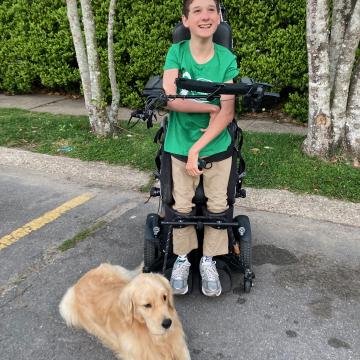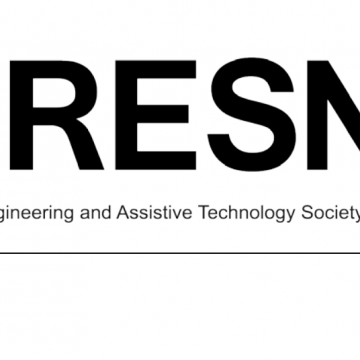
Supportive mobility devices, such as wheelchairs, walkers, canes and crutches are an essential part of life for many people with cerebral palsy. Often people describe these devices as extension of their body, their wheels are their legs, and without them, participation with friends, family, co-workers, classmates and more are not an option. Supportive mobility devices offer independence.
It is crucial that everyone who needs supportive mobility devices get proper evaluations and proper, timely, maintenance that not only take into consideration health needs, but also social, family, employment, leisure and community needs. For the user, the freedoms that supportive mobility devices offer are often curtailed by functional and maintenance issues, lengthy wait times for repairs, transportation or environmental adaptation requirements and, of course, insurance restrictions. With team work, collective advocacy, and the inclusion of individuals with disabilities in the design process, the provision of supportive mobility devices can truly give those who rely on them the freedom and independence they deserve.
-

The "W" Word A parent's perspective as she recalls the moment she realized that a wheelchair meant freedom for her son and not a barrier to his progress. -

The Power of Wheels Powered mobility can offer users young and old a level of freedom and independence that may not be achieved through manual wheelchairs or other mobility devices. -

Stand on Demand to Increase Participation Jen Lyman provides a parent perspective on powered wheelchair standing devices as it relates to Dr. Lisa Kenyon's research article.
-
Get the Facts
Complex Rehabilitation Technology Fact Sheet Complex Rehabilitation Technology serves to enhance the lives of individuals who utilize it with the goals of maximizing health, wellbeing, participation and independence.
-

Understanding Supportive Standing Devices Supportive Standing Devices, also known as Standers, are frequently recommended equipment for individuals who are primarily wheelchair users. There are lots of different types of standers which can support a range of different physical and activity needs. Learn more about them here! -

Movers, Shakers, and Troublemakers: How Technology can Enhance Mobility and Access for Children with Disabilities Mobility technology can enhance the lives of young children with disabilities in ways parents often never consider. Learn about how it can help your child beyond getting from point A to point B!
-

Early Powered Mobility Early powered mobility has been shown to improve cognition in children with multiple, complex disabilities. -

Stakeholder Perspectives on Pediatric Powered Wheelchair Standing Devices Author summary on stakeholder perspectives of pediatric powered wheelchair standing devices. -

Supported Standing, what does the research say? This comprehensive review of the research evidence surrounding supportive standing for individuals, GMFCS IV and V, provides helpful information for families to make practical decisions about for whom, when, and how long to use a standing device. -

Supported Stepping, what does the research say? This comprehensive review of the research evidence surrounding supportive stepping for individuals, GMFCS IV and V, provides helpful information for families to make practical decisions about for whom, when, and how long to use a supported stepping device (also known as gait trainers).
-

Little Wins LittleWins harnesses the power of community to empower people with disabilities with the tools they need to thrive! From buying, selling, and donating medical equipment and supplies, to obtaining needed information and connecting with others – LittleWins is the one-stop community resource for families, parents, caregivers, in-home nurses, and all people with disabilities. -

ACCESS 2 CRT (Complex Rehab Technology) Access2CRT is here to empower advocates with the information and resources needed to promote and protect access to Complex Rehab Technology (CRT) access for people with disabilities and Cerebral Palsy. -

RESNA (Rehab Engineering and Assistive Technology Society of North America) RESNA (Rehab Engineering and Assistive Technology Society of North America) is a great place to find highly qualified rehab and assistive technology professionals in your area. They also have provided their research to help providers and the families they serve make decisions about powered mobility for young children. -

NCART Standing Device Funding Guide NCART Standing Device Funding Guide contains all the information needed to choose, measure, and write a letter of medical necessity for a standing device.
-
Support Tools
Evidence and Guidance for Support for Standing Standing devices and standing wheelchair devices are frequently prescribed and often denied equipment options for individuals with cerebral palsy. The attached paper provides evidence and guidance to...
-

The 2024 CPF Accessible Holiday Gift Guide The 2024 Accessible Holiday Gift Guide is a great place to find gifts, gadgets, gear, and more...not just for the holidays but for birthdays or any day you are looking for something special, all year round!
For individuals with mobility limitations, powered mobility devices (PMD), such as powered wheelchairs and scooters, may
provide independent mobility which may not be otherwise possible.













